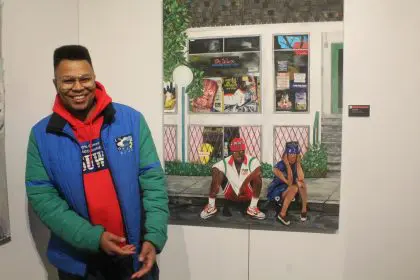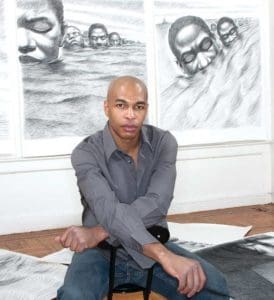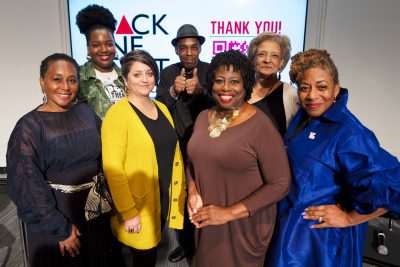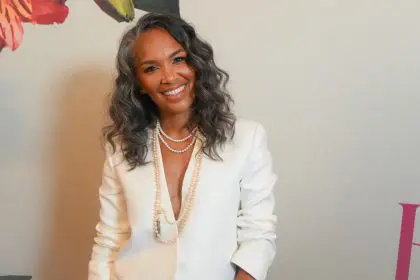 “My background is in African American History. I graduated from the City College of New York – majored in African American History, minored in Education,” shares Pamela Thomas, curator of the “Funky Turns 40: Black Character Revolution” exhibition which opens at The DuSable Museum on June 27, 2014. It commemorates the 40th anniversaries of 1970s’ Saturday morning cartoons that featured positive black characters for the first time in television history.
“My background is in African American History. I graduated from the City College of New York – majored in African American History, minored in Education,” shares Pamela Thomas, curator of the “Funky Turns 40: Black Character Revolution” exhibition which opens at The DuSable Museum on June 27, 2014. It commemorates the 40th anniversaries of 1970s’ Saturday morning cartoons that featured positive black characters for the first time in television history.
“Back in the 1970s, before the explosion of cable TV channels, everybody watched the same cartoons. Since then, many of these cartoons have re-aired on cable networks reaching new generations of children. This exhibition is definitely bringing back fond memories for everyone who watched these cartoons,” she enlightens.
Read what else she has to say.
I think the 1970s was the greatest decade ever! Black culture from the 1970s was very rich, which is why so much of it has served as the foundation for hip-hop culture. It was in your face. It was raw. It was real. From fashion, to music, television programming and movies it was very cool to be black. Back then, we were very proud to be black.
What do you hope museum goers walk away with after seeing this exhibit?
“I hope that everybody gets an opportunity to reconnect with a happy time from their childhood, when they ate cereal and watched Saturday morning cartoons. I also hope that people see how cool it is to collect different types of history, that you can collect whatever you love and are passionate about. I also hope that black people understand how important it is for us to own our own history and tell our own stories. If you don’t know what happened, important pieces of history can be re-written and erased.”
“The Funky Turns 40: Black Character Revolution” exhibition is a fun, colorful, nostalgic experience that is culturally and historically relevant for the black community but also appeals to a broader audience. Practically every piece of art represents a historical first, such as:
Peter Jones – “The Hardy Boys” (1969) – First positive black male character in a Saturday morning cartoon series
Valerie Brown – “Josie And The Pussycats” (1970) – First positive black female character in a Saturday morning cartoon series
“Harlem Globetrotters” (1970) – First positive black cast Saturday morning cartoon series and the first featuring black athletes
“The Jackson 5ive” (1971) – First positive black cast Saturday morning cartoon series featuring black musicians
“Fat Albert and the Cosby Kids” (1972-1985) – Longest running positive black cast Saturday morning cartoon series
“Kid Power” (1972) – First truly multicultural Saturday morning cartoon series and the first featuring black characters to be created from a syndicated comic strip, Morrie Turner’s “Wee Pals” comic strip
Lt. Uhura – “Star Trek” (1973) – First positive black character from a television series to appear as the same character in a Saturday morning cartoon series
Verb – “Schoolhouse Rock” (1974) – First black male superhero character in a cartoon; second Schoolhouse Rock episode to feature black characters
Chuck Clayton – “The U.S. Of Archie” (1974) – First black male character in an Archie’s Saturday morning cartoon series
Astrea – “Space Sentinels” (1977) – First black female superhero character in a Saturday morning cartoon series
SuperStretch and MicroWoman – “Tarzan And The Super 7” (1978) – First black superhero duo in a Saturday morning cartoon series
Billy Jo Jive – “Billy Jo Jive” (1978) – First positive cartoon series featuring black characters to be created from a series of children’s books – Ted and John Shearer’s Billy Jo Jive book series; aired as segment during “Sesame Street.”
It was the first time that cartoons like “Josie And The Pussycats,” “Kid Power” and “Star Trek” featured strong, positive black female characters. It was also the first time that black people like Bill Cosby and Berry Gordy led the development of animated television programming featuring black characters, from concept through art creation and production.
Tour schedule:
“The Funky Turns 40: Black Character Revolution” Exhibition Tour schedule to date is as follows:
Schomburg Center For Research In Black Culture – New York, New York – February 1 – June 14, 2014
“The Funky Turns 40: Black Character Revolution” Exhibition at the Schomburg Center For Research In Black Culture in New York was a phenomenal success! The exhibition was seen by 73,672 people, a plus 145 percent increase more than the original attendance estimate of 30,000 visitors. The exhibition audience was multicultural and multigenerational.
DuSable Museum Of African American History – Chicago, Illinois – June 27 – Oct. 20, 2014
Northwest African American Museum – Seattle, Washington – Nov. 22, 2014 – March 1, 2015
Reading Public Museum – Reading, Pennsylvania – Sept. 26, 2015 – Jan. 3, 2016
Pensacola Museum Of Art – Pensacola, Florida – February 6 – April 2, 2016
















